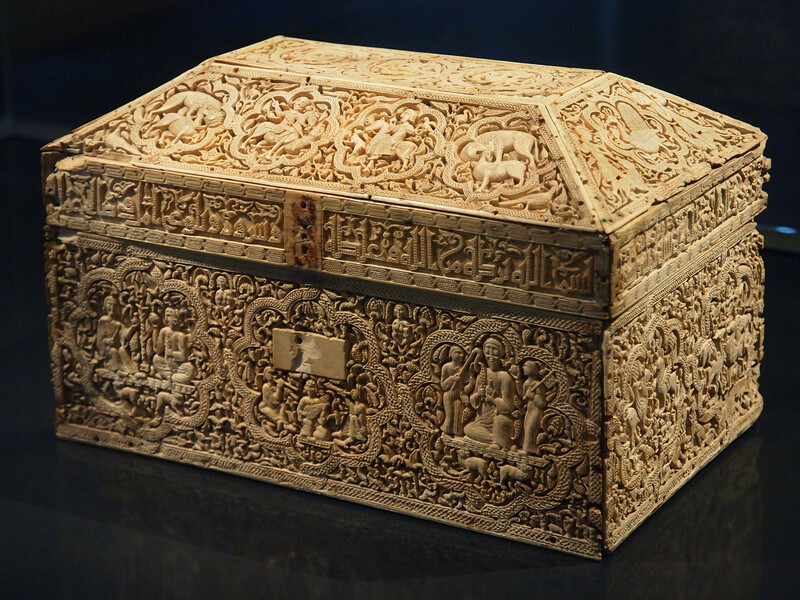Leire Casket
Type:
Caskets,
Reliquaries
Date:
1004–5
Location or Findspot (Modern-Day Country):
Spain
Medium:
Ivory
Dimensions:
38.4 × 23.7 × 23.6 cm
Description:
The Leire Casket is a rectangular ivory box with a truncated pyramidal lid. It was originally a secular object produced in al-Andalus, but it was repurposed as a Christian reliquary in the mid-eleventh century. It may have been sent from the south to the Christian north of the Iberian Peninsula as a form of tribute payment after the fall of the Umayyad caliphate in 1031. It housed the bones of Nunilo and Alodia, Christian sisters martyred in ninth-century Córdoba. The casket was originally produced in the workshop of a master craftsman named Faraj, whose name appears inscribed inside the lid ("This is the work of Faraj and his disciples") and on the calf of a hunter on the right side of the lid. In addition to hunting scenes with various animals, there are scenes of courtly life, including musicians playing their instruments (lute, horn, double flute).
Relevant Textbook Chapter(s):
6
Repository and Online Resources:
• The Leire Casket is now in the Museo de Navarra in Pamplona, Spain.
• For more views, visit the page for this object on the website of photographer Antonio García Omedes.
Image Credits:
Antonio García Omedes

